INverse entertainment: A brillant Old school game
Oct 21, 2017 2:39:45 GMT -6
Galamoth, Saint Germain, and 1 more like this
Post by Pure Miriam on Oct 21, 2017 2:39:45 GMT -6
original article link: www.inverse.com/article/37529-castlevania-netflix-bloodstained-koji-igarashi
Transcription:
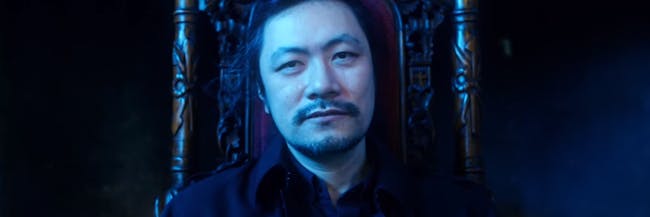
Koji Igarashi wears a cowboy hat and a leather bullwhip in his public appearances. I do not know why. Supposedly, it’s a reference to the Belmonts, the family of vampire hunters who carried whips and chains in Castlevania, the classic action-adventure video games Igarashi (he prefers “Iga”) began working on in 1990. But during our interview at New York Comic Con, I’m so engrossed by his loud accessories and quiet demeanor that I legitimately forget to ask if that’s the case. For some reason, I thought it would be rude.
However, I am not afraid to ask what he thought of the super popular (and super short) Castlevania anime that premiered on Netflix in July. Although Iga is closely tied to the series, he didn’t work on 1989’s Castlevania III of which the anime was based. But it doesn’t matter. Iga loved it anyway.
“We watched it and thought it was great,” Iga tells Inverse via an interpreter on the Sunday of New York Comic Con. “We could tell the creators knew what the game was all about. I‘m sure a lot of fans love it. We thought it was great.”
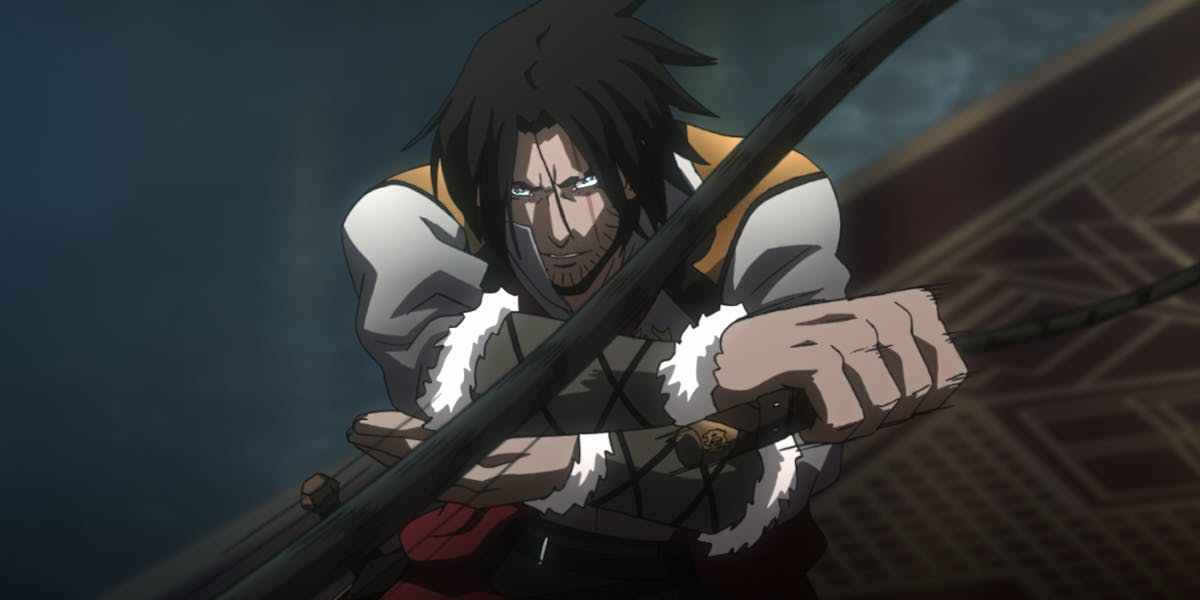
Inside the Javits Center, across Disney’s Star Wars booth, publisher 505 Games has a dozen machines running Iga’s newest source of pride: Bloodstained: Ritual of the Night, a spiritual successor to the Castlevania games of yore that Iga funded on Kickstarter in 2015. Set for release in 2018 for consoles and PC, Iga is starting to bring his game out of his Japanese studio Artplay and into the public worldwide.
In 2014, after he left Konami, his home of 24 years, Iga decided to grant fans’ wishes for a new, vintage “Metroid-vania” style game. “For a very long time, this kind of side-scroller platformer was not available, at least the kind I was making,” says Iga. Though he acknowledges there are “a lot of indie games” that imitate retro ‘80s/’90s games, “there wasn’t one that came from the Castlevania” mold. That’s why he made Bloodstained.
“I want those players to play this game again and have that same experience from the past. There’s a lot of indie games, but we wanted this to feel like an authentic side-scroller.”
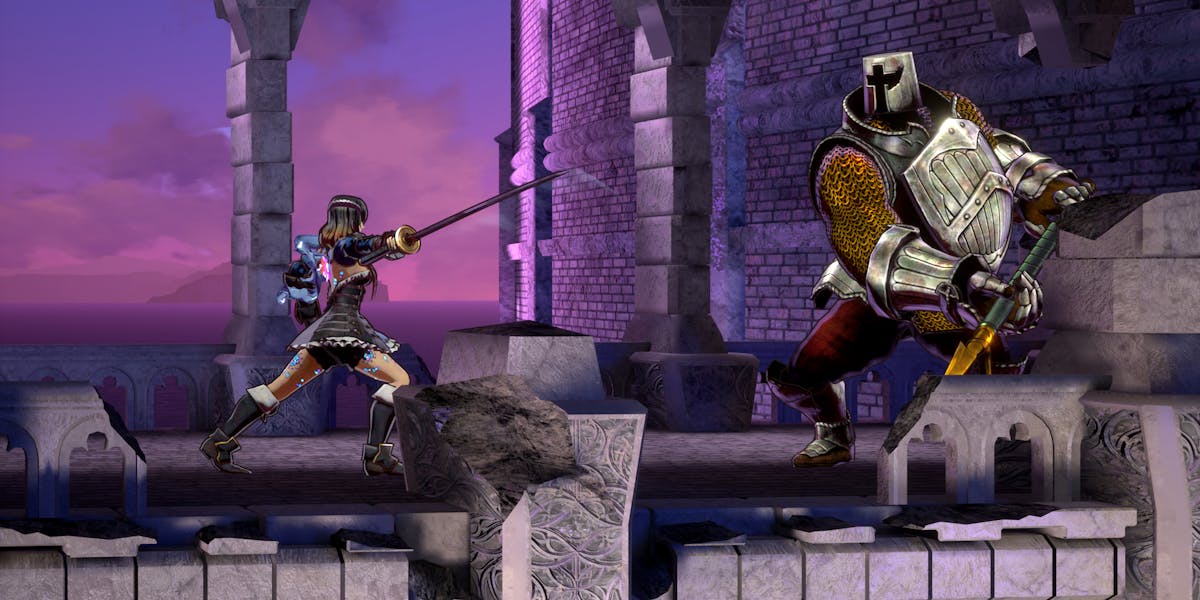
Because Castlevania is Konami’s to keep, Iga created a new IP, with a whole new story that aesthetically recalls the gothic stylings of Castlevania. “We want to make it similar, but when we started the Kickstarter, we couldn’t just do science-fiction and things like that,” Iga says. “We can’t stray from that gothic horror fans expect from my games. So kept the theme. Since I made the scenarios for Castlevania, it may feel similar because it’s written by the same person. But we wanted to make it feel different as its own IP.”
One major way Bloodstained is different from Castlevania is in its primary focus. In Castlevania, the antagonist Dracula is arguably the main character, as players take control of various descendants of the vampire hunting Belmonts in different Castlevania games. In Bloodstained, the story is more traditional, with its protagonist — “This girl who’s cursed and her body slowly turns into a crystal,” Iga describes — as the primary subject.
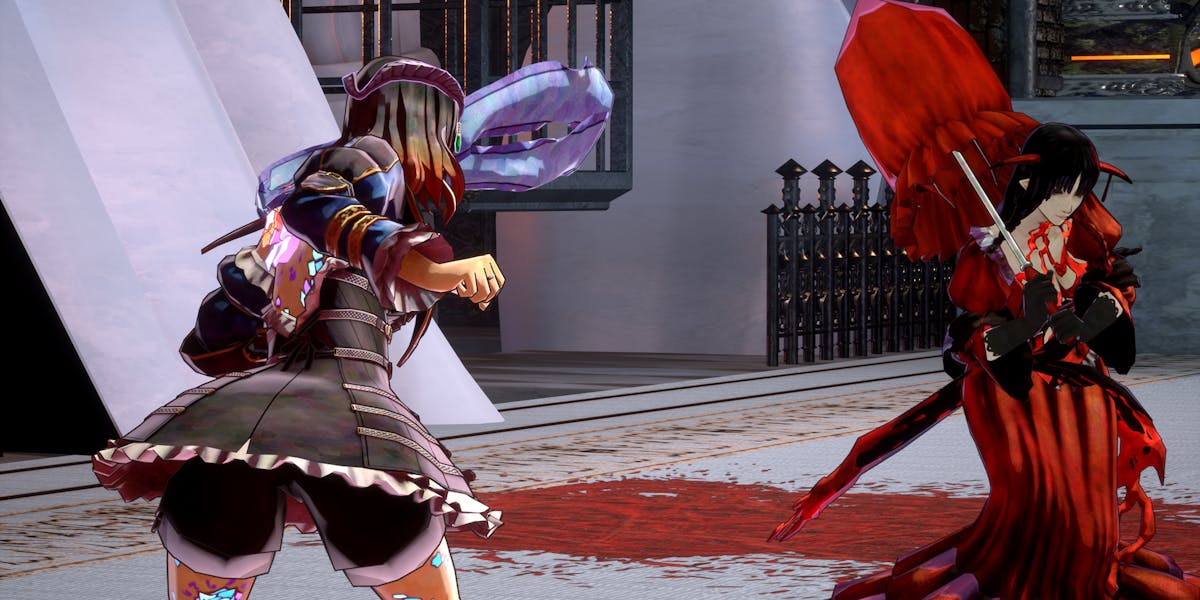
Because of Kickstarter, Bloodstained also couldn’t be made like Iga made Castlevania. “Back when I used to be at Konami, they would make [the games] secretive. They wouldn’t release any materials until a month or two before relase.” Accountability on Kickstarter forced Iga and Artplay to provide regular updates, which included showing the game to customers as they were developing it. It was an unusual experience for the industry veteran.
“If you change during development, it’s different than what you promised. We have to make sure we’re meeting backer expectations and develop the game we want it to. We have to commit every time we give an update. That’s risky for someone who came from a different [background].”
“No one is trying to fail a project,” Iga adds, who took feedback from Kickstarter supporters seriously. “By listening, we get [what everyone wants] so much quicker. It’s a lot easier to include in the game.” Artplay didn’t entertain every suggestion — that would make development beyond impossible — but the studio did let their own instincts guide them.
“We incorporate those [suggestions] we agree with,” he says. “We have a guideline for ourselves. We listen but we always incorporate our opinion first.”
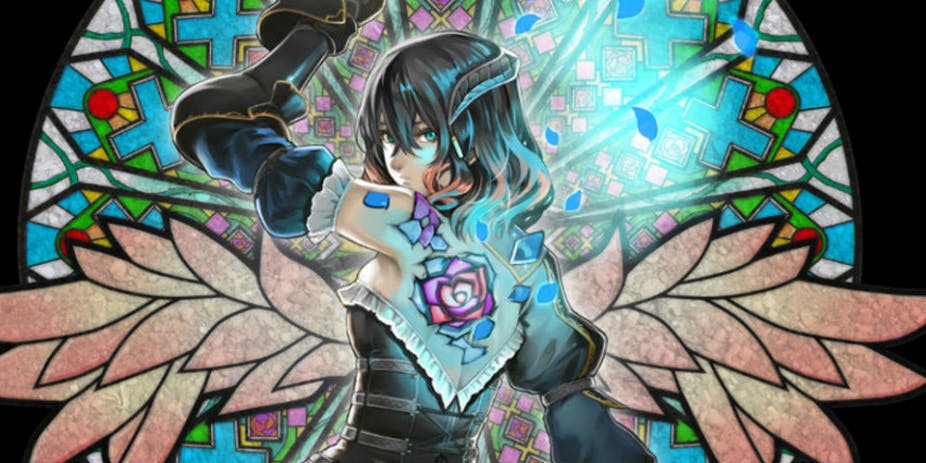
Above all, Iga says he took after the games of yesteryear as his primary guide. Though I did notice few 2017 quality-of-life standards during my time playing the demo — dying isn’t as much of a hassle as it was in Castlevania — Iga is determined to bring back that feeling of playing a game from the past, when and where the rough edges were just part of the experience.
“Gamers have different expectations, but I think that’s why these old-school games are trending,” Iga says, attributing to the plethora of mobile games and cinematic triple-A titles for creating a viable niche market where Bloodstained is homing in on. “People want to play this game. We wanted to bring this video game, that feels like a video game. That’s why we’re doing this now.”
Bloodstained: Ritual of the Night will be released on PC, OS X, Xbox One, PlayStation 4, and Nintendo Switch in 2018.
Transcription:

Legendary 'Castlevania' Producer Is Making a Brilliantly Old School Game
Koji Igarashi also shares his thoughts on the Netflix anime.
Koji Igarashi wears a cowboy hat and a leather bullwhip in his public appearances. I do not know why. Supposedly, it’s a reference to the Belmonts, the family of vampire hunters who carried whips and chains in Castlevania, the classic action-adventure video games Igarashi (he prefers “Iga”) began working on in 1990. But during our interview at New York Comic Con, I’m so engrossed by his loud accessories and quiet demeanor that I legitimately forget to ask if that’s the case. For some reason, I thought it would be rude.
However, I am not afraid to ask what he thought of the super popular (and super short) Castlevania anime that premiered on Netflix in July. Although Iga is closely tied to the series, he didn’t work on 1989’s Castlevania III of which the anime was based. But it doesn’t matter. Iga loved it anyway.
“We watched it and thought it was great,” Iga tells Inverse via an interpreter on the Sunday of New York Comic Con. “We could tell the creators knew what the game was all about. I‘m sure a lot of fans love it. We thought it was great.”

Inside the Javits Center, across Disney’s Star Wars booth, publisher 505 Games has a dozen machines running Iga’s newest source of pride: Bloodstained: Ritual of the Night, a spiritual successor to the Castlevania games of yore that Iga funded on Kickstarter in 2015. Set for release in 2018 for consoles and PC, Iga is starting to bring his game out of his Japanese studio Artplay and into the public worldwide.
In 2014, after he left Konami, his home of 24 years, Iga decided to grant fans’ wishes for a new, vintage “Metroid-vania” style game. “For a very long time, this kind of side-scroller platformer was not available, at least the kind I was making,” says Iga. Though he acknowledges there are “a lot of indie games” that imitate retro ‘80s/’90s games, “there wasn’t one that came from the Castlevania” mold. That’s why he made Bloodstained.
“I want those players to play this game again and have that same experience from the past. There’s a lot of indie games, but we wanted this to feel like an authentic side-scroller.”

Because Castlevania is Konami’s to keep, Iga created a new IP, with a whole new story that aesthetically recalls the gothic stylings of Castlevania. “We want to make it similar, but when we started the Kickstarter, we couldn’t just do science-fiction and things like that,” Iga says. “We can’t stray from that gothic horror fans expect from my games. So kept the theme. Since I made the scenarios for Castlevania, it may feel similar because it’s written by the same person. But we wanted to make it feel different as its own IP.”
One major way Bloodstained is different from Castlevania is in its primary focus. In Castlevania, the antagonist Dracula is arguably the main character, as players take control of various descendants of the vampire hunting Belmonts in different Castlevania games. In Bloodstained, the story is more traditional, with its protagonist — “This girl who’s cursed and her body slowly turns into a crystal,” Iga describes — as the primary subject.

Because of Kickstarter, Bloodstained also couldn’t be made like Iga made Castlevania. “Back when I used to be at Konami, they would make [the games] secretive. They wouldn’t release any materials until a month or two before relase.” Accountability on Kickstarter forced Iga and Artplay to provide regular updates, which included showing the game to customers as they were developing it. It was an unusual experience for the industry veteran.
“If you change during development, it’s different than what you promised. We have to make sure we’re meeting backer expectations and develop the game we want it to. We have to commit every time we give an update. That’s risky for someone who came from a different [background].”
“No one is trying to fail a project,” Iga adds, who took feedback from Kickstarter supporters seriously. “By listening, we get [what everyone wants] so much quicker. It’s a lot easier to include in the game.” Artplay didn’t entertain every suggestion — that would make development beyond impossible — but the studio did let their own instincts guide them.
“We incorporate those [suggestions] we agree with,” he says. “We have a guideline for ourselves. We listen but we always incorporate our opinion first.”

Above all, Iga says he took after the games of yesteryear as his primary guide. Though I did notice few 2017 quality-of-life standards during my time playing the demo — dying isn’t as much of a hassle as it was in Castlevania — Iga is determined to bring back that feeling of playing a game from the past, when and where the rough edges were just part of the experience.
“Gamers have different expectations, but I think that’s why these old-school games are trending,” Iga says, attributing to the plethora of mobile games and cinematic triple-A titles for creating a viable niche market where Bloodstained is homing in on. “People want to play this game. We wanted to bring this video game, that feels like a video game. That’s why we’re doing this now.”
Bloodstained: Ritual of the Night will be released on PC, OS X, Xbox One, PlayStation 4, and Nintendo Switch in 2018.




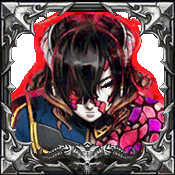

 yey
yey